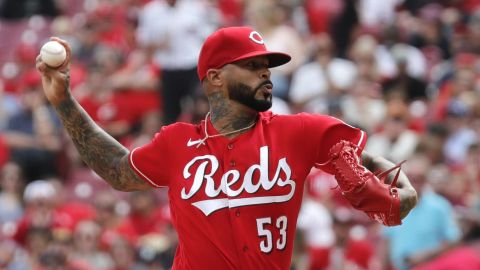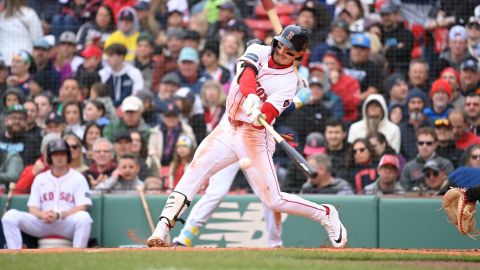Wednesday’s bizarre press conference in Fort Myers was the perfect ending to Nomar Garciaparra‘s Red Sox career. “Nomah” retired from baseball as a member of the Red Sox, flanked by two men whose relationship with the shortstop was, at best, strained over the years.
Yet there Garciaparra was, sitting between Theo Epstein and Larry Lucchino, talking about “what the organization has always meant to me [and] my family.”
The debate over the sincerity of those words filled the pages and airwaves of Boston’s sports outlets throughout the afternoon and will continue for days to come. Ultimately, though, a bigger debate lies ahead: Is Nomar Garciaparra a Hall of Famer?
Whether you love him or hate him, there is no denying he was well on his way to Cooperstown when his career inexplicably derailed in 2004. Nomar had finished in the top 10 in MVP voting in six of the seven years prior to that, and was undoubtedly one of the top players in the game. He burst onto the scene as a unanimous Rookie of the Year in 1997. He won back-to-back batting titles in 1999 and 2000, two of the six seasons in which he recorded 190 hits or more.
Along with Alex Rodriguez, Derek Jeter and Miguel Tejada, he revolutionized the position of shortstop. Suddenly, it was a power position. A shortstop hitting 25 home runs (Nomar did it four times) was no longer shocking.
It wasn’t always that way. Until the ’90s, most shortstops were slick fielders who weren’t expected to bat in the heart of the order (think Omar Vizquel). Because of that, Nomar’s numbers compare very favorably to the 21 shortstops currently in the hallowed Hall.
Garciaparra’s .521 slugging percentage would be the best of any shortstop in Cooperstown. His 229 home runs would be fourth-most. Even his hit total (1,747) would be 18th, despite his career being short. When he retired on Wednesday, Nomar had the eighth-highest career batting average of any active player with 3,000 or more plate appearances.
Bill James created a metric to gauge a player’s Hall of Fame worthiness. In James’ “Hall of Fame Monitor,” a rating of 100 means a player has a good chance of making it, while a rating of 130 or more makes the player a slam-dunk choice. Garciaparra earned a rating of 112 in James’ stats, meaning he is clearly going to be in the discussion when his five-year waiting period is up.
Great numbers, indeed. Are they Hall of Fame worthy? Unfortunately for Nomar, the answer is no.
While Garciaparra had Hall of Fame talent, he didn’t have the longevity to be inducted into the incredibly exclusive club that is the Hall. While there has never been proof or evidence of steroid use, he played in the steroid era, where HOF voters cast a wary eye on the inflated offensive numbers of the ’90s. His defense was not enough to help him get over the edge, that side-arm delivery causing more than a few balls to tail away from the first baseman’s mitt.
Over his final six seasons, Nomar only played 100 games in a year twice. That breakdown of his sculpted physique ultimately led Garciaparra to be a part-time player for much of the end of his career (although he did win the NL Comeback Player of the Year award in 2006, when he hit .303 with 20 homers and 93 RBIs for the Dodgers). It will also keep him out of Cooperstown.
For 15 years, the argument for Jim Rice‘s induction into the Hall was that the left fielder was “the most feared hitter in the league for 10 years.” Nomar was one of the game’s greats for six years, along with that one final year of success in LA.
Seven years does not get you into the Baseball Hall of Fame. It is the most selective club of any sport. Perhaps too selective. It will prove to be too selective for Garciaparra.



